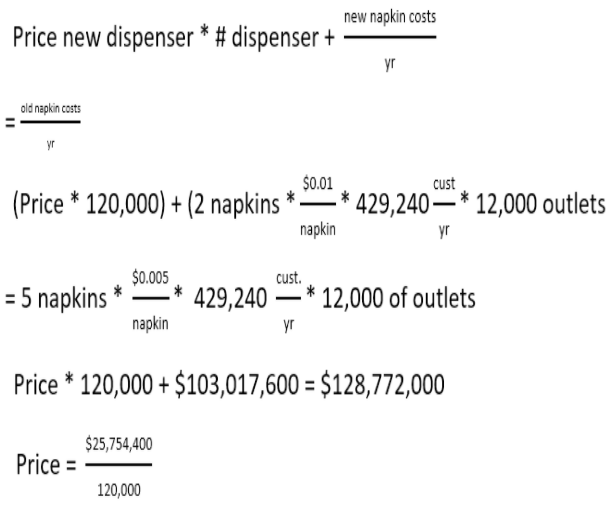McBurger
15.4k
Times solved
Beginner
Difficulty
A large fast food chain has hired us to improve the company’s profitability by cutting costs. Before engaging in the initial brainstorming session about your client’s options with your team, you first want to collect your thoughts.
Case Comments
I. Brainstorming – Question 1: Can you identify major segments for variable costs?
II. Profitability Analysis – Question 2: If our client uses the new napkin dispenser in all their outlets, how much money can they save every year?
There is a new napkin dispensing technology on the market. Since you think it could save the client money, you decide to investigate.
II. Profitability Analysis – Question 3: At what price per dispenser would the investment not be worth doing?
III. Conclusion
15.4k
Times solved
Beginner
Difficulty
Do you have questions on this case? Ask our community!






